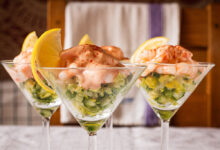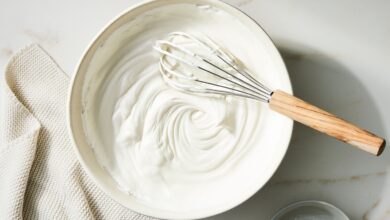The Ultimate Guide to Birthday Cakes

Birthdays are special occasions celebrated by people of all ages around the world. Whether it’s a child’s first birthday or a grandparent’s milestone 90th, there’s one element that is almost always present: the birthday cake. It is the star of the party, holding the candles that the birthday person blows out after making a wish. Let’s delve into the world of birthday cakes, exploring their history, varieties, and how to make the perfect one for any celebration.
A Brief History of Birthday Cakes
The tradition of birthday cakes can be traced back to ancient civilizations. In ancient Greece, people baked round cakes to honor Artemis, the goddess of the moon. The round shape was meant to symbolize the moon, and candles were placed on the cake to represent the moon’s glowing light.
The concept of birthday cakes evolved significantly in 15th-century Germany. During Kinderfest, a German birthday celebration for children, cakes were made in the shape of the child’s age. The German birthday cakes were relatively simple, usually resembling bread more than the sweet, frosted confections we know today. It wasn’t until the Industrial Revolution that birthday cakes became more accessible to the general public, thanks to advances in baking technology and the availability of ingredients like sugar and flour. Over time, birthday cakes grew in complexity and decoration, becoming the intricate, multi-layered masterpieces we often see today.
The Elements of a Perfect Birthday Cake
Crafting the ideal birthday cake involves combining flavors, textures, and presentation. Here’s what you need to consider when creating the perfect cake:
Flavors
The flavor of the cake sets the tone for the entire dessert experience. Popular flavors include classic vanilla, rich chocolate, moist red velvet, and fruity options like lemon or strawberry. Many people enjoy more adventurous flavors, such as salted caramel, matcha, or cookies and cream. Additionally, choosing the right filling to complement the cake layers, such as buttercream, chocolate ganache, fruit preserves, or pastry cream, can elevate the taste to another level.
Textures
A birthday cake should have a balance of textures. The cake itself should be moist and tender, while the frosting or icing adds a smooth, creamy element. Adding fillings like fruit compote, crunchy nuts, or cookie crumbs between the layers provides a contrast to the cake’s softness. This mix of textures makes each bite more satisfying and enjoyable.
Frosting
Frosting is one of the most crucial components of a birthday cake. Popular types of frosting include buttercream, cream cheese frosting, whipped cream, and fondant. Buttercream is often the go-to choice for its creamy texture and versatility in flavor. It can be colored and piped into intricate designs, making it perfect for decorating. Fondant, while less flavorful than buttercream, provides a smooth, polished finish that allows for elaborate decorations like figurines and flowers.
Decoration
A cake’s appearance can transform a simple dessert into a centerpiece. Common decorations include piped frosting designs, sprinkles, edible glitter, fresh fruit, flowers, chocolate shavings, and personalized cake toppers. For themed birthday parties, cakes are often decorated to match the occasion—whether that’s a princess castle for a child or an elegant floral design for an adult. The key is to ensure that the decoration aligns with the overall theme of the birthday celebration.
Candles
Candles are an iconic part of birthday cakes. Traditionally, the number of candles corresponds to the person’s age, and they make a wish before blowing them out. However, these days, decorative candles shaped like numbers, stars, or other fun designs are popular alternatives.
Popular Types of Birthday Cakes
Different occasions and age groups call for different types of birthday cakes. Here are some popular variations:
Classic Layer Cake
A classic birthday cake typically consists of two or more layers of cake with frosting or filling between each layer. Vanilla and chocolate are the most popular flavors, but you can mix and match flavors and fillings to create a unique cake.
Sheet Cake
A sheet cake is a single-layer cake baked in a rectangular pan. It is often easier to prepare and serve, making it a favorite for large gatherings. These cakes are commonly decorated with frosting and simple designs like balloons or flowers.
Cupcakes
Cupcakes offer a fun twist on traditional birthday cakes. They are individual servings of cake, each with its own frosting and decorations. Cupcakes allow for variety in flavors and make serving easy, especially for children’s parties.
Fondant Cakes
Fondant cakes are covered with a smooth, pliable icing that can be molded into various shapes and designs. This style is popular for themed birthday parties because fondant allows for detailed, creative decorations. While fondant provides a stunning finish, some prefer to peel it off to enjoy the buttercream underneath, as fondant tends to be less flavorful.
Ice Cream Cake
Ice cream cakes are ideal for warm-weather celebrations or for those who prefer ice cream over traditional cake. Layers of ice cream are combined with cake or cookie crumbles and topped with whipped cream or frosting. They must be kept frozen until served, making them a bit trickier to store and transport.
Naked Cake
Naked cakes have minimal or no outer layer of frosting, allowing the cake layers and fillings to show through. They are often decorated with fresh fruit, flowers, or powdered sugar. This rustic style is popular for more casual or boho-themed birthday parties.
How to Bake the Perfect Birthday Cake
Baking a birthday cake from scratch can be a rewarding experience. Here’s a step-by-step guide to help you create a homemade cake that will impress everyone at the party:
Gather Ingredients
The basic ingredients for most cakes include flour, sugar, eggs, butter, baking powder, and flavorings (like vanilla extract). For a chocolate cake, you’ll also need cocoa powder, and for a more tender crumb, you might use cake flour instead of all-purpose flour.
Prepare the Cake Pans
Preheat your oven to the recommended temperature (usually 350°F for most cakes). Grease and line your cake pans with parchment paper to prevent the cake from sticking.
Mix the Batter
Cream the butter and sugar together until light and fluffy. Add the eggs one at a time, beating well after each addition. Mix in the vanilla extract. In a separate bowl, sift the dry ingredients (flour, baking powder, salt). Alternate adding the dry ingredients and milk to the batter, beginning and ending with the dry mixture. Mix until just combined to avoid overmixing.
Bake the Cake
Divide the batter evenly between the prepared pans. Bake in the preheated oven for the recommended time (usually 25-30 minutes for round cake layers). Check doneness by inserting a toothpick into the center of the cake; it should come out clean.
Cool the Cakes
Let the cakes cool in the pans for about 10 minutes before turning them out onto a wire rack to cool completely. This step is crucial; frosting a warm cake can cause the frosting to melt and ruin the presentation.
Frost the Cake
Once the cakes are completely cooled, level the tops if necessary. Place one layer on a serving plate, spread a generous amount of frosting or filling, and add the second layer. Continue to frost the outside of the cake, using a spatula to smooth the surface. Get creative with piping designs, adding sprinkles, or using fruit for decoration.
Add Candles and Serve
Once decorated, add the candles. Light them up, sing the birthday song, and let the birthday person make a wish!
Tips for Customizing Birthday Cakes
Dietary Restrictions
For guests with dietary restrictions, consider making gluten-free, vegan, or sugar-free cakes. Many recipes cater to various dietary needs without sacrificing flavor or texture.
Theme Matching
Tailor the cake’s design to match the party’s theme. For a child’s superhero party, consider a cake shaped like their favorite character’s emblem. For an adult’s milestone birthday, opt for elegant designs using fresh flowers or edible gold accents.
Add a Personal Touch
Incorporate the birthday person’s favorite flavors, colors, or hobbies into the cake’s design. This small effort shows thoughtfulness and makes the celebration more memorable.
Conclusion
Birthday cakes are more than just dessert; they are symbols of celebration, joy, and tradition. From simple sheet cakes to elaborate fondant masterpieces, the variety is endless. The key to the perfect birthday cake lies in balancing flavors, textures, and presentation while adding a touch of creativity. Whether you bake a cake from scratch or pick one up from a local bakery, the joy it brings to the celebration is what truly makes it special. So, light the candles, make a wish, and enjoy every slice!





